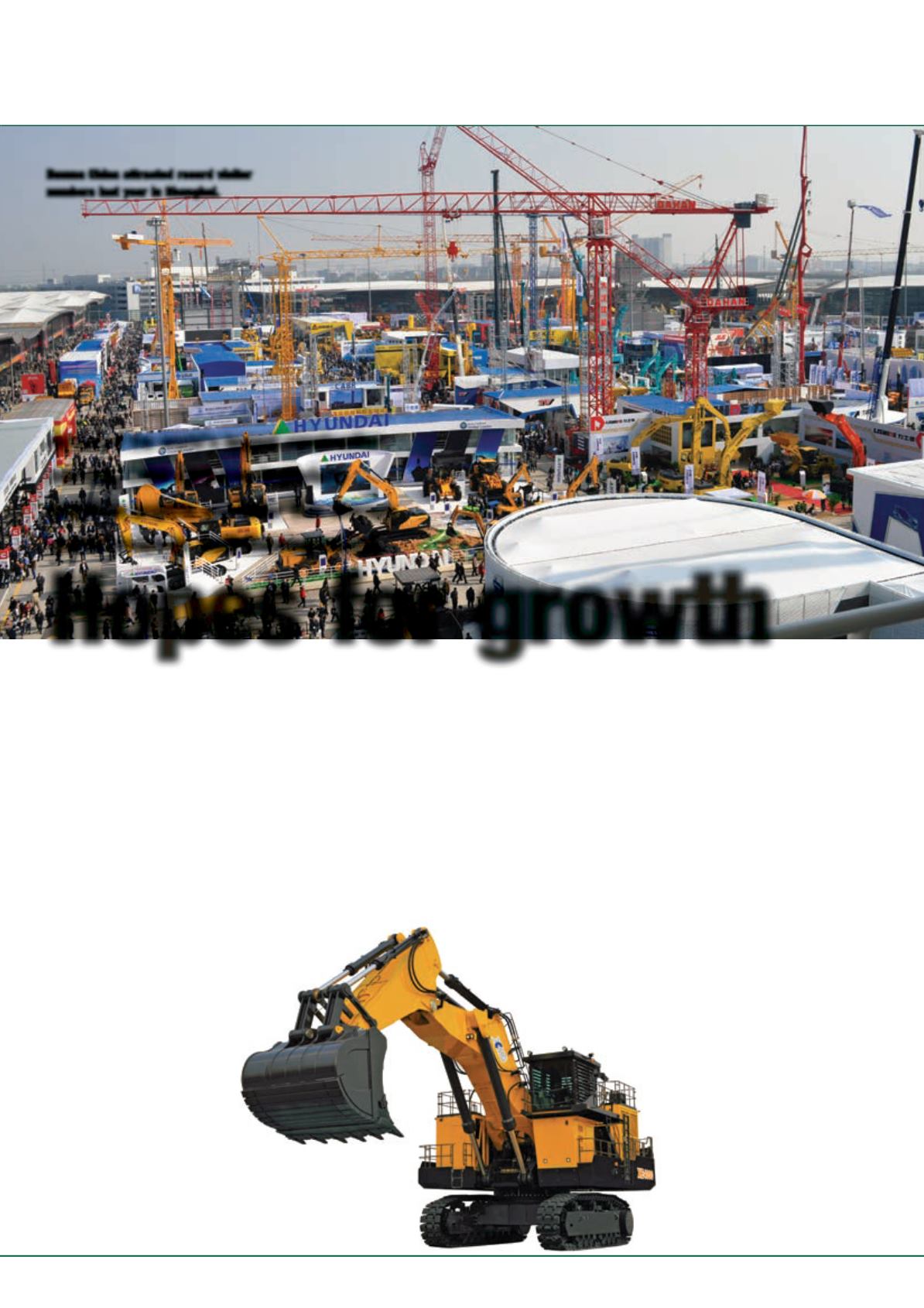
21
REGIONALREPORT
Hopes for growth
>
Budgeted atmore thanUS$10billion, theproject is, according
to its designers, expected to provide both a tourism boost and
help foster closer economic integrationwithHongKong.
The sheer scaleof suchworkhas aptlybeen summed-upbyUS-
basedMicrosoft entrepreneur BillGates.
He took toTwitter to say he had been reading historianVaclav
Smil’sMaking theModernWorld, which revealed that between
2011-2013, the Chinese construction sector used a huge 6.6
billion tons of cement to fulfil its infrastructure demands and
residential building programme.
This amounted tomore than theUShadusedduring the entire
20th century. Its catalysts had included development of China’s
nuclearpower facilities and enhancement of public transport and
high-speed rail systems.
According to research from Timetric, the country’s gross
construction value value for the construction industry reached
US$2.6 trillion in2013 (which included its annual labour costs,
services, equipment andmaterials).This was up from a figure of
US$200billion recorded in2000.
The study, based on official National Bureau of Statistics of
China figures, said this had been achieved with expansion of
cities and development of new urban centres over
the past decade.
Despite a slowdown in growth, it has
forecast the constructionmarket will reach
output levels of US$ 3.9 trillion by 2018,
with around8% real term annual growth
predicted.
As Danny Richards, analyst at
H
aving experienced phenomenal growth over the past
decade, the exceptional rise of theChinese economy and
development of its key infrastructurehavebegun to show
signs of slowing since the end of government stimulus measures
in2010.
While this has impacted to on the construction equipment
sector, as the pace of residential and commercial building
slackens, even reduced GDP growth rates of around +7% have
ensured a broad spectrum ofmajor projects remained on track.
With a record number of 190,000 visitors attending the last
BaumaChinaconstructionequipment exhibition,manufacturers
pressed ahead in showcasing a diverse range of newmachinery
designed for the nation andwider region.
China’s determination to improve growth rateswas shownwith
adecision from the centralNationalDevelopment andReform
Commission (NDRC) approving 21 infrastructure
projects to thevalueofUS$113billion.This included
five airports and 16 railway initiatives – which
will build upon its growing network of high-
speed train lines.
Among the most prominent ongoing
schemes are projects in the East of
China such as Shanghai Tower,
which is presently the country’s
second tallest structure.
Anagreementhasbeen signed for
the US$ 13 billion new airport for
Beijing, in addition to a further multi-
billion infrastructure venture linking Hong
Kongwith theChinesemainland.
The latter scheme attracted global headlines over what its
developers have billed as one of the largest projects of its kind,
which is due to reach its final phase of development next year.
Growth amid turbulence
Hopes for growth
As one of theworld’s largest construction
markets, China continues to produce
ambitious projects and better than average
growth prospects.
Neill Barston
reports.
Bauma China attracted record visitor
numbers last year in Shanghai.
XCMG unveiled its 400 tonne
mining excavator, the XE4000C at
Bauma in China.
january-february 2015
international
construction


